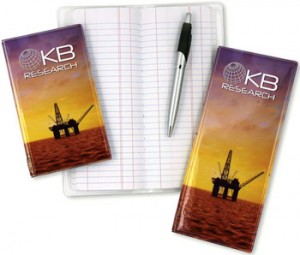
Custom pipe tally books are used by people in the oil drilling and gas industries and energy companies. They use them to record data such as pipe size, length, time of day or night that a new pipe was connected. But many other people find them very useful. These are used by trucking companies, news media, survey crews, power companies, contractors, geologists, biologists, botanists, zoologists, maintenance people, mud loggers, railroad workers, and environmentalists.
Here are 6 tips, to help you get the most out of your “pocket buddy”.

- Get a tally book with a pen loop attached to it. This keeps your pen where you need it the most.
- Get one with a hard cover, or a flexible cover. You can determine what is the best for you.
- Determine if you want a sewn-in pad or a wire-o pad. A sewn-in pad is a permanent arrangement. A wire-o pad allows the pages to easily be torn out, but the book lies flat when you are using it.
- If you work in a wet environment, get a “stone pad” instead of a “paper pad”. The new Stone Pads will not get soggy when wet. They won’t tear, either. Also use a writing instrument that works well when wet.
- Does size matter? Choose between a standard 8″ size, or the 6″ junior.
- Get your company logo imprinted in

Custom Full Color Imprint on Tally Book full color on the cover of your custom pipe tally books. This is good for your image.